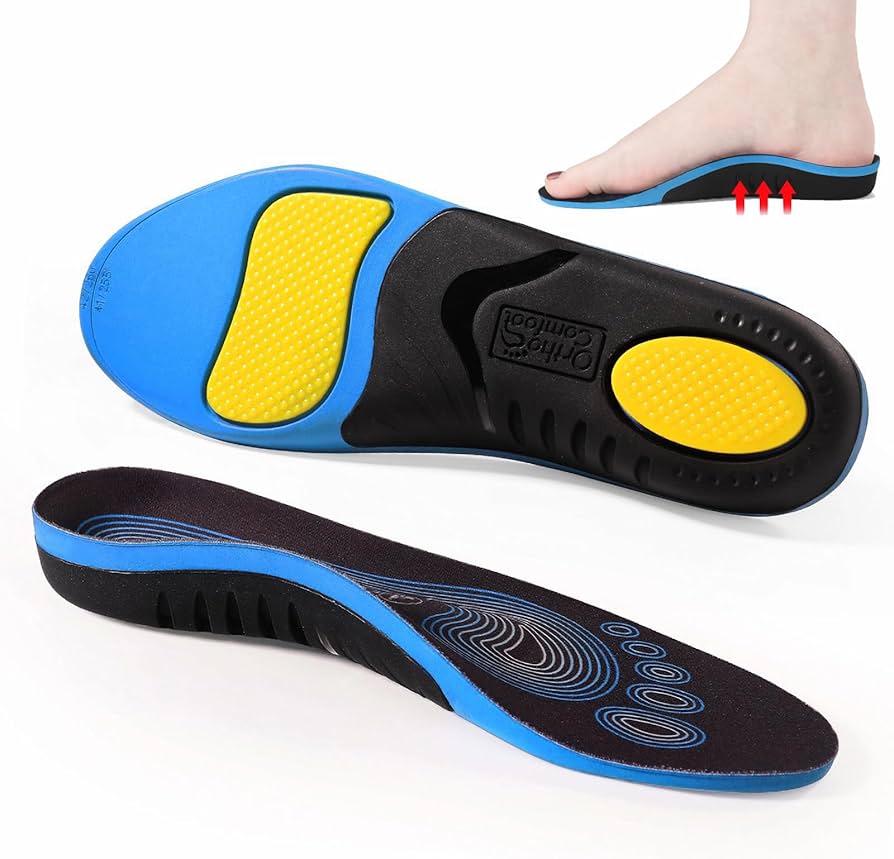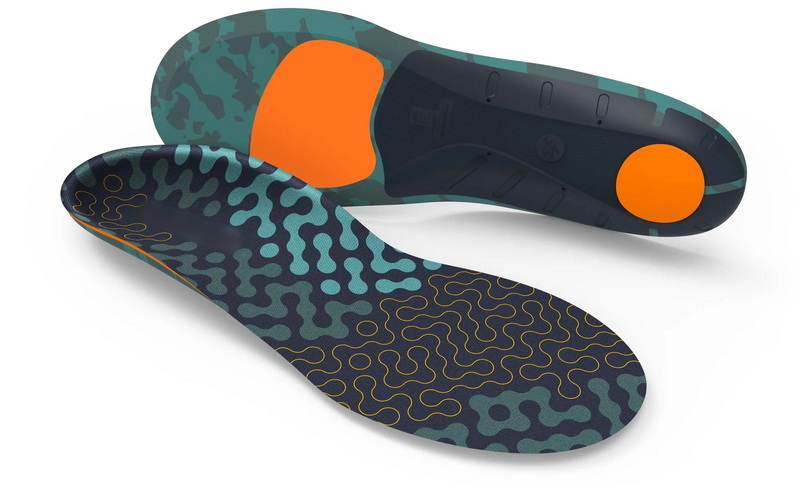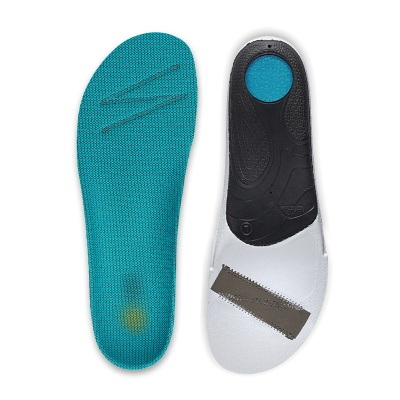Views: 222 Author: Edvo Publish Time: 2025-10-22 Origin: Site











Content Menu
● Composition of Plastic Sole Insoles
>> EVA (Ethylene Vinyl Acetate)
>> TPU (Thermoplastic Polyurethane)
● The Manufacturing Process of Plastic Insoles
>> Step 1: Material Preparation
>> Step 3: Trimming and Surface Finishing
>> Step 4: Testing and Quality Control
● Functional Benefits of Plastic Insoles
● Environmental Sustainability in Plastic Insole Production
>> Recycled and Bio-Based Materials
>> Waste Reduction and Energy Efficiency
● OEM and ODM Services for Global Footwear Brands
● Future Trends in Plastic Insole Development
● FAQs About Plastic Sole Insoles
>> 1. What materials are most commonly used in plastic insoles?
>> 2. How do EVA and PU insoles differ?
>> 3. Are plastic insoles recyclable or eco-friendly?
>> 4. How are insoles customized in OEM manufacturing?
>> 5. What benefits do TPU insoles offer for athletic footwear?
Insoles are more than inner layers inside shoes—they serve as comfort enhancers, shock absorbers, and performance stabilizers. Plastic sole insoles, in particular, combine science and craftsmanship to ensure comfort, support, and durability in a wide range of footwear applications. As one of the leading OEM manufacturers in China, we specialize in designing and producing various types of plastic insoles for sports, casual, safety, and medical footwear.
The variety of plastic materials available allows manufacturers to tailor each insole's properties to fit specific needs such as flexibility, cushioning, and temperature resistance. From lightweight running shoe liners to heavy-duty work boot soles, plastic technology provides a reliable foundation for foot comfort and protection.

Plastic insoles are primarily made from advanced polymers engineered for performance and comfort. Each type of plastic has its own strengths, making it suitable for specific footwear categories.
EVA remains one of the most versatile and widely used materials in insoles. It features softness, lightweight properties, and flexibility. When mixed in different ratios, EVA can be either extra soft for comfort-focused insoles or firmer for performance footwear. It is particularly appreciated for its cushioning abilities and resilience, allowing insoles to recover shape after repeated compression.
In manufacturing, EVA foam sheets are molded and cut into desired shapes. This material also allows easy coating, lamination, and embedding of additional support layers like gel cushions or arch supports. No wonder many sports brands use EVA as their default base material.
PU offers superior cushioning and long-lasting elasticity compared to EVA. Its open-cell structure helps promote air circulation, which improves breathability within footwear. PU insoles are highly durable and do not break down quickly under continuous stress, making them ideal for heavy-duty shoes or long-distance walking footwear. The resilience of PU foam gives stable support during daily activities without losing comfort.
Some advanced PU insoles include memory foam properties that adapt to foot pressure and retain shape for a personalized fit. PU is also compatible with moisture-wicking technologies and anti-odor treatments, which enhance user hygiene and comfort.
PVC insoles provide an economical option for manufacturers producing large volumes of affordable footwear. They are rigid and provide solid structural support. While they may not have the same cushioning level as EVA or PU, they serve well for sandals, flip-flops, or safety shoe applications where a firmer sole is required. Modified PVC with additives can achieve improved flexibility and anti-slip properties, expanding its usability.
TPR merges the benefits of plastic and traditional rubber in one material. It's soft, elastic, and slip-resistant. TPR insoles offer great grip, which is ideal for outdoor and industrial footwear. They are resistant to oils, chemicals, and low temperatures, making them reliable for a wide range of environments. Manufacturers often use TPR for outsole or midsole parts combined with other cushioning layers.
TPU stands out for its strong structure and advanced resilience. It provides excellent shock absorption, flexibility, and resistance to wear and tear. TPU insoles are often found in premium running shoes, hiking boots, and athletic footwear requiring performance consistency. TPU can also be translucent, allowing brands to experiment with aesthetic designs that highlight quality.

The production of plastic insoles combines design engineering and material science. OEM factories maintain high precision throughout the process, ensuring each insole meets the client's brand standards.
The first stage involves selecting and preparing raw plastic pellets or foam blanks. Various modifiers, including foaming agents, stabilizers, and pigments, are added to achieve targeted color, density, and elasticity. In some cases, recycled materials are blended to promote sustainability.
The prepared mixture is processed through compression or injection molding. This forms the insole's final structure, complete with contours and ergonomic patterns. Molds differ according to shoe type and design. For flat insoles, die-cutting is used from EVA or PU foam sheets. For three-dimensional ergonomic insoles, high-temperature injection molds create curvature that matches foot anatomy.
After molding, insoles are trimmed to remove extra edges and achieve uniform thickness. Surface textures or coatings are added depending on the shoe model: anti-slip layers, moisture-wicking covers, or decorative patterns. Some insoles are laminated with fabric or mesh for breathability.
Every insole batch must pass multiple tests. Manufacturers evaluate density consistency, deformation resistance, elasticity, and compression resilience. Insoles for sports brands undergo additional testing for slip resistance and shock absorption performance. These rigorous standards ensure the final product meets both domestic and international safety regulations.
Plastic insoles are designed to add multiple layers of functionality to footwear beyond basic comfort.
EVA and PU-based insoles significantly reduce heel impact during walking or running. They absorb energy upon contact and return it gradually, which prevents foot fatigue and muscle strain.
Structural materials like TPU give firmness to the arch and heel areas, maintaining posture alignment and minimizing foot stress. Such insoles are beneficial for people suffering from flat feet or overpronation.
Modern insoles integrate breathable materials that allow air circulation. Microcell foams and perforated layers prevent overheating and reduce odor buildup inside the shoe.
Compared to cork or fabric alternatives, plastic insoles maintain their shape for longer and resist deformation from sweat or pressure. They perform consistently across varying temperatures, from cold climates to tropical heat.
Plastic insoles are hygienic and easy to clean with mild soap and water. They dry quickly and do not harbor bacteria, making them suitable for long-term use.
Environmental awareness is reshaping the footwear manufacturing industry. Many OEM manufacturers now emphasize sustainable material sourcing and production processes.
Recycled EVA and TPU materials are increasingly used to minimize waste. Bio-based PU made from castor oil or plant-derived resins offers a more eco-conscious solution while retaining similar performance characteristics to synthetic plastic.
Manufacturers are adopting precision cutting to reduce material loss and utilizing closed-loop molding systems to reuse scrap materials. Modern factories also incorporate energy-efficient equipment and solar power integration to lower their environmental footprint.
In addition to sustainable production, many exporters move toward biodegradable packaging or recyclable boxes for global shipments, aligning with environmentally responsible practices.
As one of China's major OEM plastic insole manufacturers, we collaborate with global brands and wholesalers to design insole solutions that balance comfort, performance, and aesthetics. Our services include comprehensive support from design to logistics.
- Custom Design Development: We create unique molds, patterns, and textures based on brand requirements.
- Material Consultation: Guidance on choosing between EVA, PU, TPR, and TPU depending on shoe category.
- Prototyping and Sampling: 3D prototyping for functional testing before bulk production.
- Brand Labeling: Laser printing, embossing, or logo embedding options for brand identity.
- Bulk Manufacturing: High-capacity lines ensuring quality control and on-time delivery.
- Logistics Support: Efficient export packaging for international shipping stability.
Through consistent innovation and partnership, we help international shoe brands maintain quality performance and competitiveness in global markets.
The future of insole manufacturing moves toward smarter and more sustainable products.
- Smart Insoles: Integration of sensors that monitor walking patterns, pressure points, or calories burned.
- AI-Aided Design: Predictive design systems that simulate comfort response using digital testing.
- Lightweight Hybrid Materials: Combining EVA with bio-based TPU for reduced weight and enhanced flexibility.
- Recyclable Closed-Loop Systems: Where used insoles are reprocessed into new materials, creating a circular economy model.
These advancements will push the boundaries of footwear comfort and innovation while reducing the environmental burden of plastic production.
Plastic sole insoles are made from advanced polymers such as EVA, PU, PVC, TPR, and TPU. Each offers specific benefits regarding cushioning, durability, and flexibility. Through precise manufacturing processes, they transform raw materials into ergonomically designed products that enhance comfort and performance. With the growing focus on sustainability and innovation, plastic insole production continues to evolve, offering eco-friendly, functional, and customizable solutions for global footwear brands.

The main materials include EVA, PU, PVC, TPR, and TPU. Each has unique characteristics suited for different footwear types, from athletic to casual shoes.
EVA is lighter and more flexible, while PU offers greater durability and long-term cushioning. EVA suits active footwear, whereas PU fits professional or heavy-duty shoes.
Recycled and bio-based alternatives now exist for EVA and TPU, making many plastic insoles environmentally sustainable. Manufacturers also reduce emissions through efficient production methods.
OEM factories use computer-aided design and advanced molding to produce brand-specific insole shapes, materials, and logo placements.
TPU insoles provide exceptional elasticity, high tensile strength, and resistance to tears, making them ideal for running, training, and outdoor sports footwear.